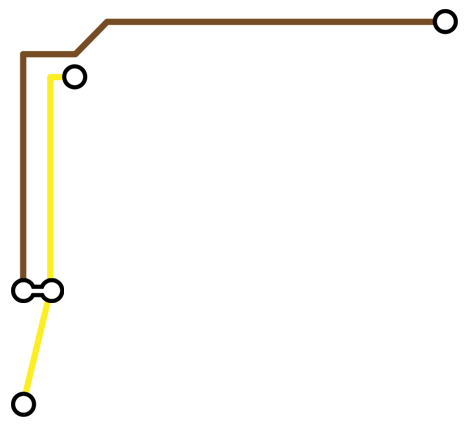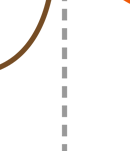My first semester teaching ENGL 540: Multimodal and Online Pedagogies was actually my first time teaching a graduate seminar. I had been out of graduate school for four years; however, the positions I held prior to coming to the University of New Mexico did not allow for teaching seminars. In some cases, I taught split courses, where undergraduate and graduate students could take the course together, with the graduate students doing extra work for the increase in credit hour, but never a seminar with only graduate students. I was a little nervous, mostly because I was unsure about the reading load. The pedagogy course would also be practical, not just theoretical, so there must be a nice mix of hands-on work that would be informed by the theory the students read. In addition, with the wealth of scholarship surrounding both multimodal composition and online education, I could probably teach one class for each of the subject areas. The thought of combining the two into one semester was daunting. Finding a balance between practicality and theory—all while trying to blend these two subject areas—would prove to be a struggle.
As noted in the Pedagogy Course section, I divided the course into two parts: one for multimodal composition and the other for online. In the first part of the semester, students read the theory behind multimodal composition, but they also listened to or watched multimodal projects, including those created by former students, to get a sense of what their students would be creating. They also listened to digital literacy narratives as presented by Ohio State’s Digital Archive of Literacy Narratives. However, the students’ own digital literacy narratives would be slightly different in that I wanted students not to just focus on how they read, write, and compose meaning in general, as is indicated on the archive’s website, but rather, the students in my class would talk through how they learned to compose or interact with technology and how their technological literacy would impact how they would teach multimodal composition. My intention with this assignment was to introduce them to multimodal composition and have them create a piece using technology, which would in turn place them in a similar position as their first-year writing students who would be asked to do the same.
Many of them had never taught multimodal composition, and a few of them were in the first year of teaching at the college level. Therefore, we started out evaluating assignments I had used in the past, analyzing and critiquing the language, discussing what might be confusing for first-year students and what might be useful for the graduate students when creating their own assignments. We used supplemental rubrics I had created to evaluate sample student projects, and these evaluations were theoretically informed by scholars such as Sonya Borton and Brian Huot (2007), who noted the importance of giving formative feedback the students can use to shape their projects during the process of composing, not just after turning in their final drafts. In turn, students critiqued Cynthia Selfe’s (2007) assignments in Multimodal Composition: Resources for Teachers that asked students to create sound projects, and they evaluated the sample corresponding projects available on the supplemental cd that accompanies the book. With these critiques in mind, students developed their own assignments, creating a teaching portfolio, complete with a philosophy of how they would approach multimodal composition in the first-year writing class. They also swapped assignments with a peer, created the multimodal project required within, and gave their peer feedback on how to improve the assignment language and criteria. Finally, they created a digital piece appropriate for the Disputatio section of Kairos.
The latter half of the class was devoted to learning online theory and developing their course shells. It was my intention that they could take the assignments they created and develop their shell based around these projects. They also created multimodal videos based on Richard Mayer and Roxanna Moreno’s (2003) principles of multimodal instruction, learning how to segment their videos (i.e., keep them short and relevant) and create them with as little information overload as possible. I critiqued these videos and helped them craft the final products that they would place in their courses. Most of the other readings during the online portion helped them the best practices for developing and teaching an online course, as well as theory behind distance learning (e.g., Hewett & Ehmann, 2004). During the last three weeks of class, the technology staff at New Media and Extended Learning (NMEL) visited the class and helped students create their shells.
While the graduate students were teaching their courses in the spring semester following the pedagogy course, I asked them to participate in a survey where they would reflect on their learning and offer suggestions for improving the seminar. A few students indicated that the theory they read did help them structure the course; however, they were unsure about the day-to-day tasks and how much they should be interacting with students on an individual level or responding to students in the discussion boards. When redesigning the course for Fall 2014, I decided to add Scott Warnock’s (2009) book Teaching Writing Online: How and Why, as this text discussed many of the ins and outs of teaching online, including how to develop a persona, establishing relationships with students, and managing time commitments in the online classroom. In the previous seminar, I only created lectures based around a few of Warnock’s principles, and I feel that assigning the entire book helped the students in the following semester become more prepared to teach in the unfamiliar environment. In addition, this time, I asked students to create PowerPoint lectures and lead student led-discussions based around chapters in the Warnock book, and I placed these instructional tools in our own supplemental Blackboard shell for quick reference. Lastly, I asked a couple of veteran teachers to visit the class and give advice to the novice students regarding teaching online for the first time, and these students led a fruitful question-and-answer session that the novice students suggested they appreciated.
The students in my first pedagogy course also suggested that they wanted to workshop their course tools well in advance of the final three weeks, indicating they wanted more time to create scaffolding tools that would lead up to course assignments. To help students in the subsequent semester, I integrated lessons throughout the course that would help them, including opportunities to develop discussion boards in groups where they could receive peer feedback, as well as chances to talk through small writing tasks that would supplement the major assignments. Other workshops included having them draft and sketch PowerPoint slides they could use for their supplemental videos that would accompany writing assignments. Beyond asking them to read Mayer and Moreno (2003), I required more reading about multimodal instruction, such as scholarship that I wrote with peers at ASU regarding developing a multiliteracies pedagogy online (Bourelle et al., 2013a) and creating multimodal instructional tools that would model multimodal composition for first-year students (Bourelle et al., 2013b). These resources provided a theoretical foundation, as well as practical advice, for the students while they were creating a multimodal curriculum for the online environment.
I still struggled with balancing the two areas of study (multimodal composition and online pedagogies); however, in the subsequent semester, with the workshopping lessons I integrated, students were working on their course shells well in advance of the final three weeks of the course where they would be designing their Blackboard shell. At this point in the Fall 2014 course, they had most of their instructional tools, discussion boards, and small writing tasks written; now all they had to do was physically create the course. I also provided models of these tools, creating a Dropbox where veteran students could upload projects and lessons they felt were useful, and novice students could adopt any of these assignments and lesson plans, putting their own spin on them and tweaking them for their individual courses. I created this Dropbox at the beginning of the semester, and the novice students were able to look through the tools well in advance of planning their multimodal curriculum. I feel there is more I can do to help the students in the seminar class become more prepared to teach online, and in future courses, I plan to have them lead a few discussion boards within current, or “live,” first-year writing courses, to give them a better sense of how to lead these discussions before jumping into their own courses.
The seminars I’ve taught also help my own teaching in that I’m constantly evaluating my pedagogy and practices. For instance, I’ve always held the belief that in multimodal composition, the instructor should not choose the audience, purpose for communication, or medium—these choices should be left up to the students, and these are the skills that will translate to life after the technology they use is no longer relevant. However, through many discussions with the graduate students, I can see merit in making some of these choices for students initially at the beginning of the semester, leading up to assignments where students make all of these choices themselves. In this way, students can start to feel more comfortable with multimodal composition from the onset of the course. Other lessons I’ve learned are how to have meaningful discussions with students beyond the structure or technology that is available in Blackboard. For instance, many of the graduate students have scheduled weekly Google Hangout sessions where the first-year students are required to attend one session. These types of interactive discussions help students get to know their peers and instructor on a more meaningful level. Other graduate students have had success in creating and integrating social media tools such as Tumblr and Facebook pages as ways to encourage more community building, and I plan to try these activities as well. Overall, the seminar class has taught me that my pedagogy, no matter how successful it seems to work in the online class, can always be improved.
Reflections in Online Writing Instruction:
Pathways to Professional Development
Pathways to Professional Development

Professor Reflection
Author Bio























